CONTENTS
Presentation
Tephrocactus Articulatus, known for its unique charm, belongs to the Cactaceae family and is native to South America. Its main characteristic is the presence of joints along the stems, giving it an intriguing and peculiar appearance. These cacti are appreciated not only for their resistance, but also for their ease of care, making them a popular choice among succulent plant enthusiasts.
Meaning of the Tephrocactus Articulatus Cactus
In addition to its unique aesthetics, the Tephrocactus Articulatus is often symbolized as an example of resilience in nature. Its ability to thrive in arid and adverse conditions serves as an inspiration to face challenges with steadfastness. By growing this plant, succulent lovers find not only a charming addition to their garden, but also a reminder of the beauty that flourishes even in the most challenging environments.
| Common Name | Tephrocactus Articulatus |
|---|---|
| Botanical Name | Tephrocactus Articulatus |
| Family | Cactaceae |
| Type of Plant | Cactus |
| Adult size | Varies, generally compact and small |
| Sun exposure | Full sun or direct sunlight |
| Soil type | Well-drained, sandy soil |
| pH of the Soil | Slightly acidic to neutral |
| Flowering Season | Spring to summer |
| Color of Flowers | Variety of colors, including yellow and orange |
| Native Area | South America, arid regions |
| Toxicity | Generally non-toxic, but can cause irritation |
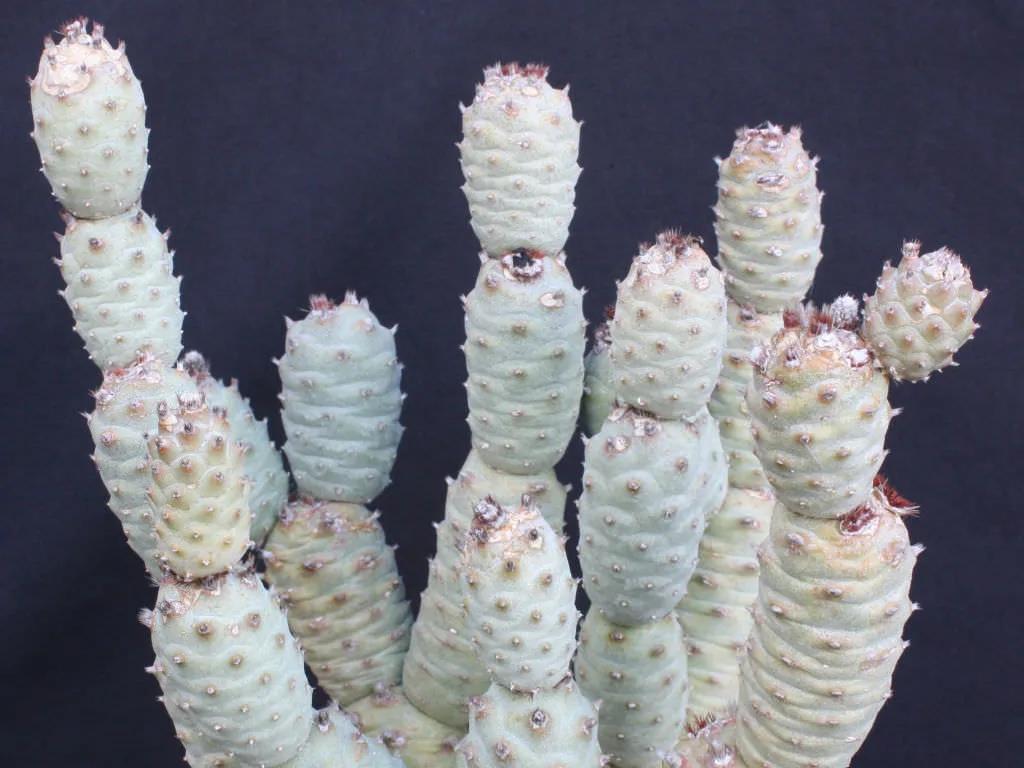
How to care for Tephrocactus Articulatus
Adequate light:
Tephrocactus Articulatus thrives in direct sunlight. Position it in a spot that receives full sun to ensure healthy, vibrant growth. Make sure to provide adequate sunlight to stimulate the development of the distinctive joints.
Well-drained soil:
These cacti prefer well-drained, sandy soil. Ensure that the soil mix allows water to drain quickly, preventing it from accumulating around the roots. This helps prevent problems related to excess humidity, which are common in succulent plants.
Moderate watering:
Tephrocactus Articulatus should be watered moderately. Allow the soil to dry out completely between waterings to avoid excess moisture, which can lead to root problems. During the colder or dormant months, reduce the frequency of watering to meet seasonal needs.
Temperature and humidity:
These cacti are resistant to arid conditions and prefer moderate temperatures. Protect them from frost and extreme temperatures. Humidity is not a significant concern, as these plants adapt well to dry environments.
Strategic Fertilization:
Fertilize Tephrocactus Articulatus during the growing season, usually in spring and summer. Use a balanced fertilizer for cacti and succulents. Avoid over-fertilizing, as cacti generally require moderate amounts of nutrients.
By following these care guidelines, you will provide an environment conducive to the healthy flowering of Tephrocactus Articulatus, enjoying its unique beauty for long periods.
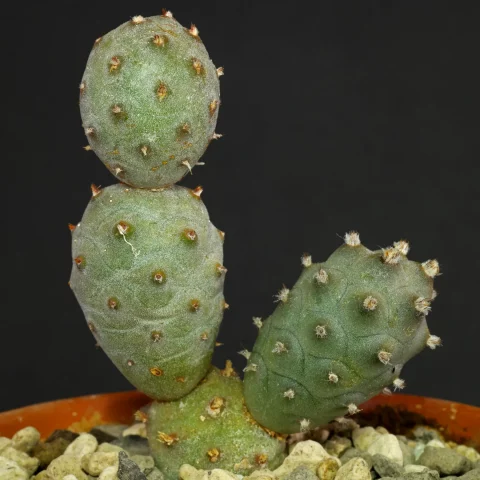
How to make cactus seedlings
To propagate Tephrocactus Articulatus, opt for the cuttings technique. Cut off a healthy joint using a sharp blade and leave it to dry for a few days to form a protective film. Plant the cutting in airy, well-drained soil, keeping it slightly moist. After a few weeks, roots will begin to develop, indicating successful propagation.
How to Plant a Cactus
When planting Tephrocactus Articulatus, choose a pot or planting site with good drainage. Fill with a substrate suitable for cacti, making sure there is sand or perlite to encourage drainage. Insert the joints into the soil, pressing gently to firm. Water moderately and avoid excess moisture during the first few days to allow the roots to establish themselves.
By following these steps, you can expand your collection of Tephrocactus Articulatus, enjoying new seedlings and ensuring a successful planting.
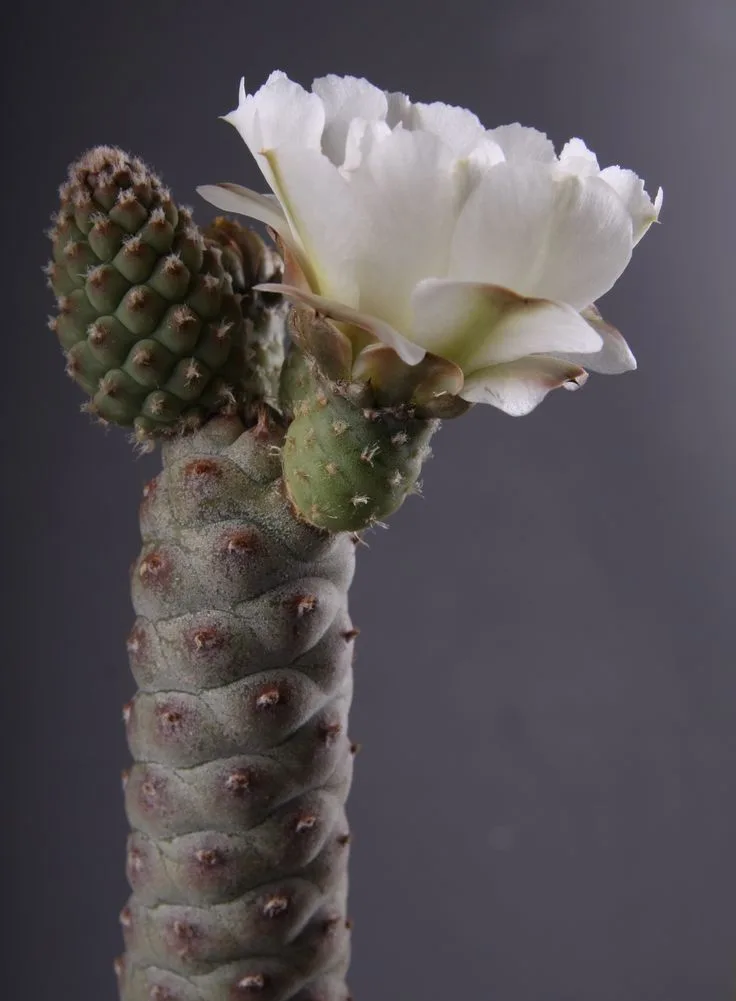
Pests and diseases
Pests:
- Mealybugs: Regularly inspect the joints for signs of mealybugs. If detected, remove them manually or use an isopropyl alcohol solution to clean them.
- Mites: Monitor leaves for signs of mites. Increase the humidity around the plant to discourage them
Diseases:
- Root rot: Avoid excess moisture in the soil by maintaining moderate watering. If you notice signs of root rot, remove affected areas and replant in dry soil.
- Leaf spots: Maintain good air circulation and avoid wetting the leaves during watering to prevent the development of spots.
Common Problems and Their Solutions
- Withered stems:
- Cause: Excessive watering.
- Solution: Reduce the frequency of watering and adjust the soil to improve drainage.
- Yellowed leaves:
- Cause: Excess sun or nutritional deficiency.
- Solution: Move to a place with filtered sunlight or adjust feeding with a balanced fertilizer.
- Growth stalls:
- Cause: Extreme cold conditions.
- Solution: Protect from frost and keep in a warmer environment.
By being aware of these problems, you can keep your Tephrocactus Articulatus healthy and vibrant by preventing and solving common issues.
Curiosities Myths
Fascinating Curiosities:
- Extreme Adaptation: Tephrocactus Articulatus is known for its incredible ability to adapt to arid environments, withstanding adverse conditions with remarkable resilience.
- Remarkable longevity: In ideal conditions, these cacti can live for several decades, making them long-term companions for lovers of succulent plants.
Demystified Myths:
- Needs Little Light: Although it prefers direct sunlight, Tephrocactus Articulatus can tolerate a few hours of shade, dispelling the belief that it requires constant sun.
- Pest Resistance: Although robust, it is not immune to pests. Regular monitoring is essential to maintain the plant’s health.
Exploring curiosities and clarifying myths contributes to a more comprehensive understanding of Tephrocactus Articulatus, allowing growers to fully enjoy this fascinating cactus species.
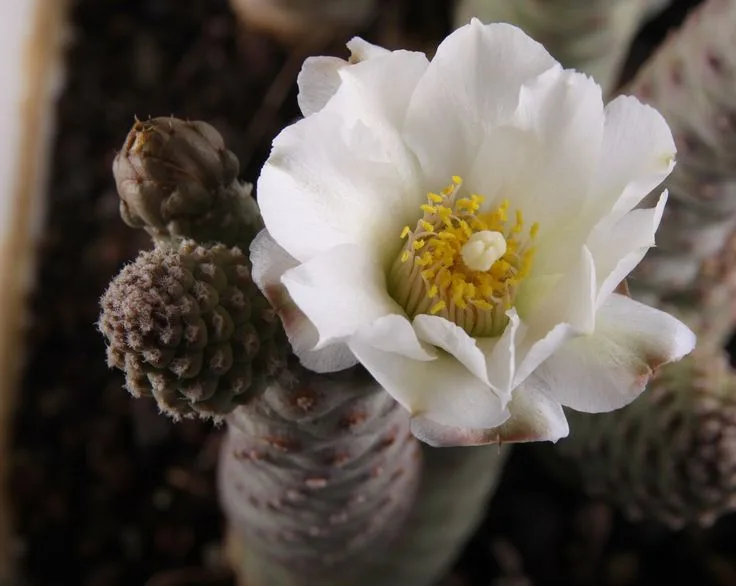
Conclusion
Throughout this comprehensive guide to Tephrocactus Articulatus, we explore everything from its presentation to essential care and dispel common myths. This plant, known for its distinctive joints and exceptional resistance, has become a popular choice for succulent lovers.
To recap the main points, it is essential to provide Tephrocactus Articulatus with a sunny environment, well-drained soil and moderate watering. Propagation by cuttings offers the opportunity to expand your collection, while attention to pests and diseases contributes to the plant’s long-term health. In dispelling myths, we highlight the versatility of this species, adapting to different light conditions. Growing Tephrocactus Articulatus is an exciting journey, rewarding growers with its unique beauty and remarkable longevity. So embark on this succulent adventure and enjoy every joint of this fascinating cactus.
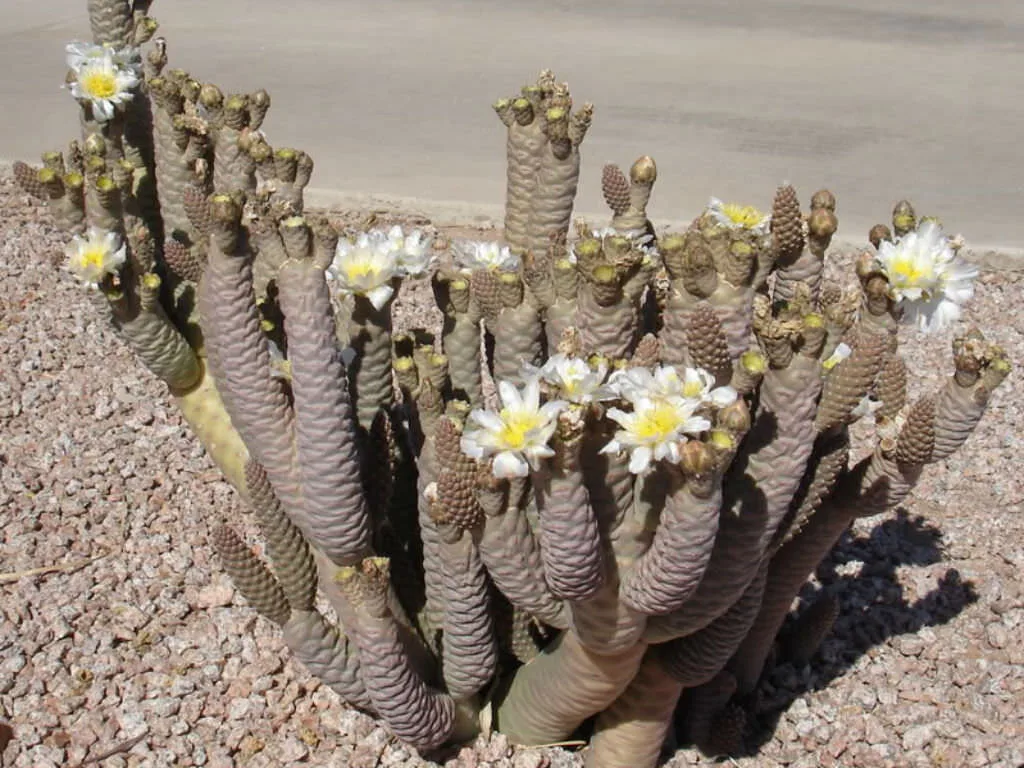
Frequently Asked Questions
How many times a week should we water the cactus?
The ideal watering frequency for cacti, including Tephrocactus Articulatus, varies depending on the environmental conditions. In general, it is recommended to water once every two weeks during the active growing season (spring and summer) and reduce the frequency in winter. The soil should dry out completely between waterings to avoid root rot problems.
What is the name of the plant that looks like a cactus?
The plant that resembles a cactus, but does not belong to the cactus family, is Euphorbia. Some species of Euphorbia, such as Euphorbia trigona (Candelabra), have characteristics similar to cacti, but belong to a different botanical family.
How to care for Tephrocactus?
To care for Tephrocactus Articulatus, it is essential to provide direct sunlight, ensure well-drained soil and apply moderate watering. Avoiding excess moisture is crucial to prevent problems such as root rot. In addition, it is advisable to keep the plant in an environment with suitable temperatures, protecting it from frost in winter. Propagation by cuttings is also an effective technique for expanding your Tephrocactus collection.







